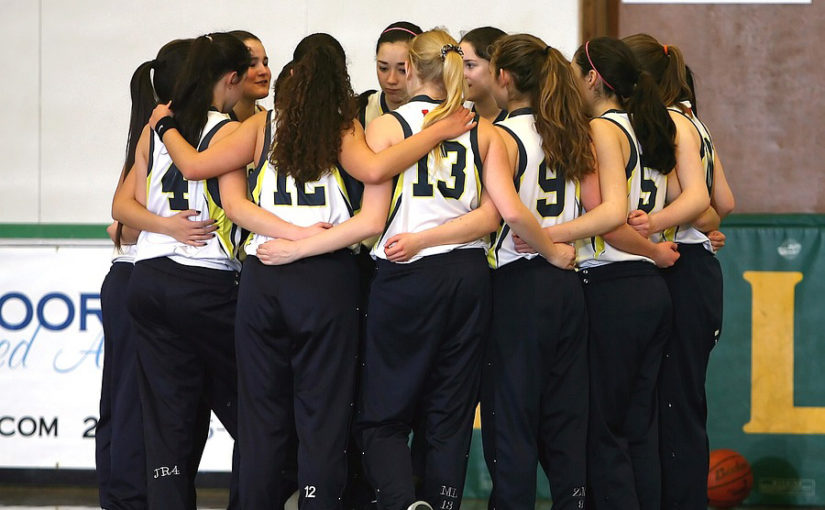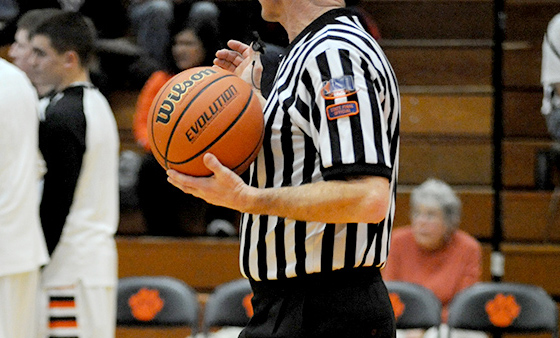Intense Situation Coaching In Basketball Part 3
Winning basketball evolves from the same general pattern of all the other sports. It has a sound philosophy, a specific plan, and the right players in the right positions, and fully capitalizes on the energies and resources involved in the plan.
The game plan has to be error-proof. All of the techniques in it must be analyzed, demonstrated, and perfected. Nothing is left to chance.
To do all these things well, the players must study them, practice them, and use them in a game. Big things and little things—things that can win close games, especially in pressure situations late in the game—when a “little thing” can practically steal the game from a superior opponent.Like everything else in your plan, the little stratagems must be practiced and perfected before being used in a game.
Following are some of the many different winning scenarios from the perspective of the basketball administrator.
Assistant Coaches
Assistant coaches must be given the responsibilities to oversee the way to ensure an efficient and productive coaching staff.
Is there a plan or delegation for all assistant coaches during practice, timeouts, and half-time in pre-game, games, and post games?
Where do the coaches sit during games? Together or interspersed among players at pre-determined locations? (Why or why not? Where?)
Practice Planning and Practice Administration
In addition to serving as a good example and showing the players the coaches’ commitment to organization, hard work, and effort; the detailed practice plans make the teaching and coaching of the players more time-efficient and productive.
Players want to know what is expected of them and why they are asked to do the things that a coaching staff wants them to do.
They need to be led by example and to have faith and trust in the coaching staff. With a practice plan that is carefully laid out (and followed) that encompasses all of the details that are necessary to give a team the poise that it needs to be successful and have confidence in the coaching staff’s word.
It should never be assumed that every player is proficient in every factor of the game.
Every aspect of the game, including all fundamentals and techniques, must not be assumed by the coaching staff that each player is proficient in.
Certain fundamentals must not be omitted because they are boring to the coaching staff to teach and boring to the players to learn, improve on, or practice. A coaching staff must preach and show by example the “5 P’s—proper planning prevents poor performance!”
Pre-Game Administration
Have those pre-game responsibilities been delegated to assistant coaches and managers?
Do the players know what time they are to arrive? Does the coaching staff give the team any free time to prepare in their own individual manner? Are there any parameters set for those ways?
Are the managers given a certain time to arrive at the locker room? When they do arrive, are they given specific assignments to pass out uniforms, warm-ups, and the preparation for Gatorade or water? Who is delegated to keep track of the time before the first half? Is there a designated time the players have to warm up for the first half?
Is there a pre-game shoot-around? Is there a particular pre-game warm-up routine?
Who is in charge of filling out the scorebook and naming the game’s starters?
“Last Shot” Philosophy
Preserving possession of the ball for the last shot of the time period and then scoring could mean as much as a 6-point swing in the momentum and confidence builder that one possession could produce.
Having two or four end-of-time period possessions can then be looked upon as invaluable in the preparation time for that game.
Does one of the teams have a decided edge in the preparation of such unique scenarios?
But unless this team can achieve an edge in these situations, all of the hard work and effort put forth by both players and coaches (during the actual game and in practices) will have gone for naught.
Multiple Defense & Offense
A successful coaching staff must be able to not only evaluate the physical skills and talents of their team but their mental skill level as well.
Having more than one offense or defense can be very instrumental in achieving success in basketball. But having too many can mentally hamper a team and decreases its overall effectiveness.
The multiplicity of offenses and defenses must be carefully evaluated, as each team has a different mental capacity.
Offense—SOB/BOB
Before end-of-the-quarter (or half) or late-game decisions that can determine the outcome of a game are made, there are other ideas and philosophies that must to be developed. Does your team have baseline out-of-bounds plays that work so well against man-to-man and/or against zone defenses?
Substitutions
Do you have a philosophy and a set plan on what to do whenever a player comes out of the game? Do all the players know what is expected of them? Do the assistants know their responsibilities and assignments? Are the players taken out allowed to sit anywhere on the bench or are they instructed to sit in a specific location to receive individualized instructions and corrections from a designated coach? Who is that designated coach?
Foul-Trouble Substitutions
Does the coaching staff have a first half and second-half philosophy on taking out a key player because of foul trouble? How many fouls does a player have to get in the first (or second) half before being taken out? At what point in time is that player put back in the game?
Offensive/Defensive Subs.
Does the coaching staff have a predetermined plan for subbing offense for defense or vice versa at the end of the game? Are the players sold on the defensive and offensive stand-outs?
Do they know the proper procedures for when and how to report in on dead ball situations?
If a coaching staff and team strongly believe in this end-of-the-game procedure, why not use it at the end of the first half or at the end of the quarters?
Timeout Administration
Has the coaching staff practiced late-game timeouts with just the coaching staff? Who has the freedom to talk in the huddle? Who is in charge of obtaining statistics for the timeout? Who is in charge of the diagram boards?
Do the manager(s) have water or Gatorade and towels ready? What coach is in charge of making sure that substitutes get in for the resumption of play after the timeout? What coach is in charge of keeping track of the time remaining in the timeout?
Does the coaching staff have a set procedure for letting the active players and substitutes know where to assemble?
Has everyone been educated on the importance of the timeouts and know what is expected of them?
Has the staff practiced timeouts with the team, including assistants and managers? Are the short timeouts managed any differently than full timeouts? Do the players still go to the bench or do they remain on the court and huddle up?
Timeout Selections
Does the coaching staff have a philosophy on whether they want the players early in the game to call a timeout to protect the possession of the ball as they are about to fall out of bounds or about to get tied up after a loose ball? Or does the coaching staff want to save those timeouts for late game situations?
If the coaching staff does not have a set philosophy and has not taught their players, those decisions will have to be left to the players. How does the coaching staff want to feel about that rule?
Stealing a Timeout
Does the coaching staff have a procedure in place to use the designated time to replace a fouled-out player (whether it is their player or an opponent) to gather their team together for an extra timeout? Have the players practiced that procedure?
Half-Time Administration
Have the essential responsibilities been delegated to the assistant coaches and managers? Who is in charge of the foul situation, the score book, and the other important statistics? Who is delegated to keep track of the time before the second half? Do you have a designated time for the players to warm up for the second half?
What kind of warm-up routine does the staff want the team to use for the second half? Is it the same as the first half warm-up routine? Who is in charge of naming the second-half starters?
Last-Shot Administration
If a team and staff spend so much time and effort preparing for a last-play scenario, shouldn’t the coach go with a well-thought out play that was designed before the pressure packed situation—a play that all of the players have seen and actually practiced beforehand?
Post-Game Administration
Assistant coaches and managers need a pre-determined plan of action to make the end-of-game activities a learning atmosphere? This will be the last impression that everyone involved in the program will take away from the game, and many different activities and responsibilities must be taken care of, such as the press and the possible dispersal of players.
Who will be allowed in the locker room after games? Will there be a post-game instructional session by the Head Coach? Will the media be involved after the game?
Uniforms, basketballs, and first-aid equipment must be gathered up, inventoried, and stored. Scorebooks, statistics, and video equipment must be collected.
All of these “behind the scenes” activities must not only be done, but done in a timely and efficient manner.
Final announcements about the next meeting must be given to the team before they are dismissed. Players want and need to know the routine before and after games so they can perform them the way the coaching staff wants.
Creating a philosophy and specific plan for all of these scenarios takes a great deal of time and effort by a coaching staff, but its development can be much more productive when done in the off-season and not in the “heat of battle,” during an actual game.
During the season, the appropriate techniques can be explained, taught, sold, and practiced with the players. Such preparation will give a team the necessary confidence to be successful.
Remember the saying, “Hard work beats talent when talent doesn’t work hard.” Hard work in planning and organizing by a coaching staff can be an invaluable asset for the basketball program.












